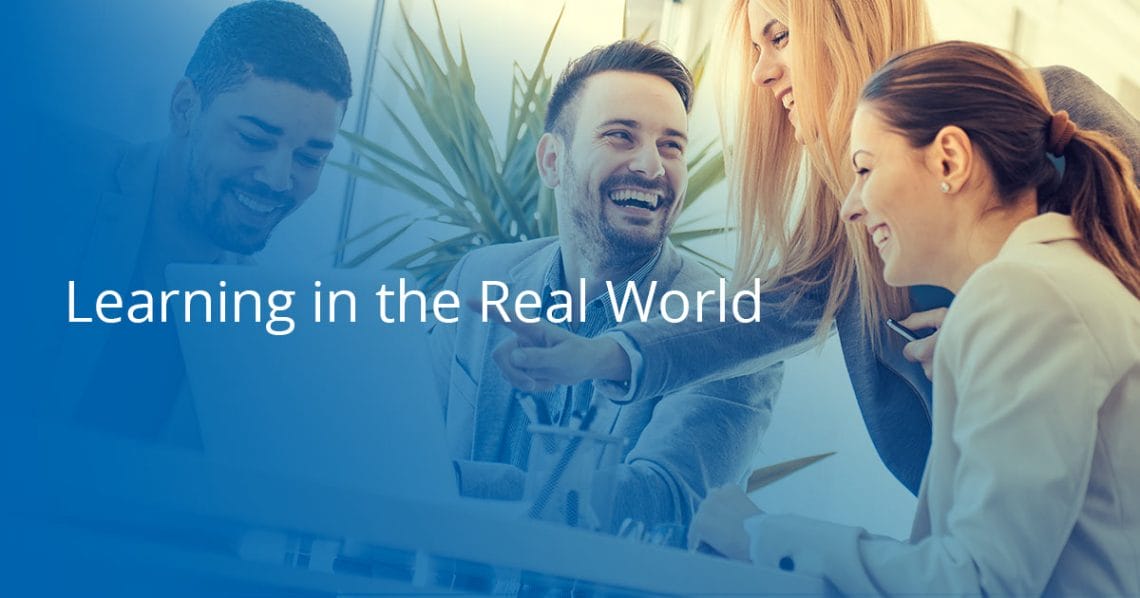
Creative workers and their employers need to change the way they view their workplace
Alexandre Magno is the founder of Learning 3.0, an organization that espouses the belief that the product of learning is no longer defined by experts and instead emerges when learners are faced with new conditions and challenges. Rich Aspinall is another facilitator in the organization. They teamed up to compose this post for Docebo, the first in a series on the defining principles of Learning 3.0.
Learning 3.0 – Principle 1: Learning in the Real World
by Alexandre Magno and Rich Aspinall
Unlike athletes who train exhaustively before having their learning tested in a competition, or like the industrial worker who is often trained to repeat known actions during execution, the creative worker learns much of what they need to do in their job, at the very same time they’re working.
This is inevitable, but also stimulating, and can happen both intentionally and accidentally. When this happens purely by accident, there is a great possibility of stress, as managers usually understand that the worker should know how to do such work, and should not “waste time” learning how to do it. This attitude creates an unsustainable work pace, discouragement, fear, and potentially, far worse consequences.
To take advantage of the great opportunity to learn in an integrated way while at work, creative workers and their companies need to align expectations related to the space and time needed for learning. With that, these workers will be able to, intentionally, invest energy in learning what is necessary to do the work that lies ahead.
We’re not talking about separating two hours a day, or eight hours a week, to “allow” the worker to read books or do research on the Internet; we mean empowering workers with the purpose that they mix learning and work on their own while they find opportunities and needs for such.
Examples of Learning in the Real World
Some good examples of learning in the real world could be:
- Support safe-to-fail experiments;
- Problematise meetings and training, by focusing on real-world situations, and not simulations;
- Support continuous learning by giving workers access to their preferred platforms and tools;
- Help them to organise and grow communities of practices, hackathons, and other kinds of techniques that put focus on real world events;
- Help creative works to identify learning opportunities and visualise how much they’re learning, using tools like the learning mosaic.
True learning is now embedded in work. The need to learn comes through our relationship with a context that is constantly changing, and it resolves itself while we iterate and learn in the real world. In almost any situation which you see workers learning, actually they are working, or rather, they are almost doing both.
The new equation for working is (working = learning + performing) . Thus, creative workers and organisations should have a new view of their workplace, as the best learning opportunities will be found there. That’s why “Learning in the real world” is principle #1 of Learning 3.0.
Docebo knows there’s no silver bullet to great learning, but we acknowledge technology is a piece of the pie. Try our solution free for 14 days. No cost, no credit card, no commitment.

About the authors
Alexandre Magno is the founder of Learning 3.0, an organization that espouses the belief that the product of learning is no longer defined by experts and instead emerges when learners are faced with new conditions and challenges.

Rich Aspinall is a facilitator at Learning 3.0.
